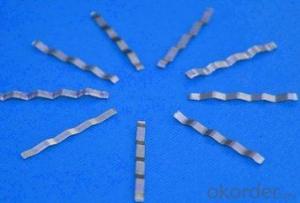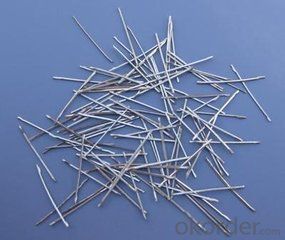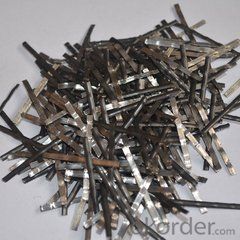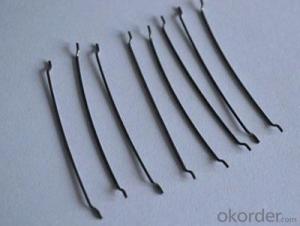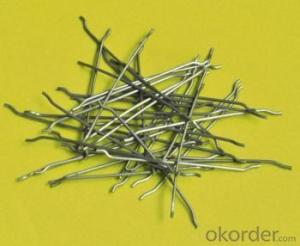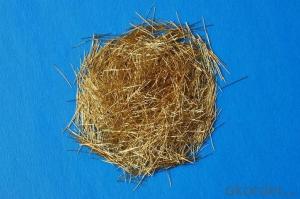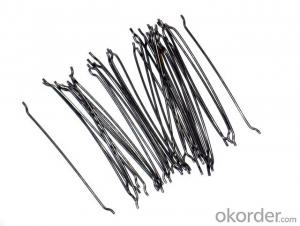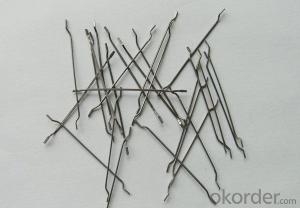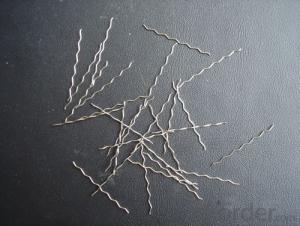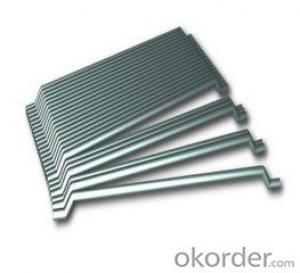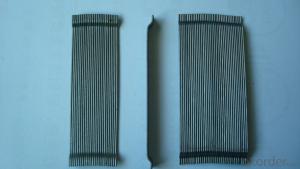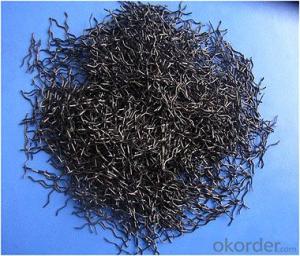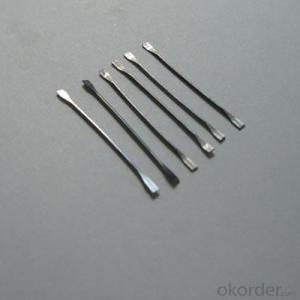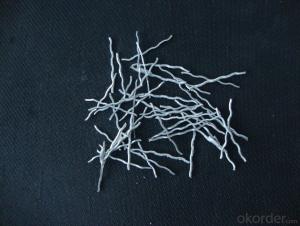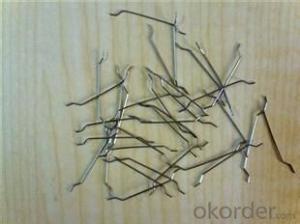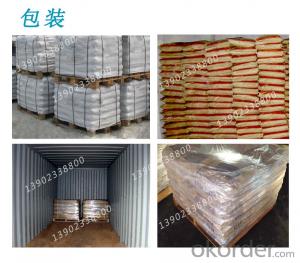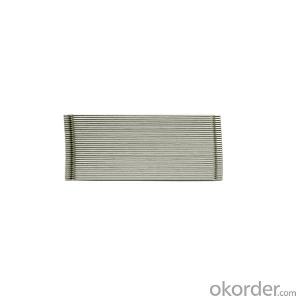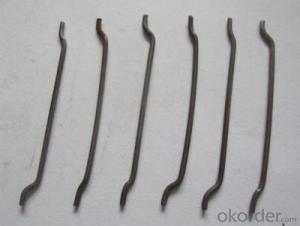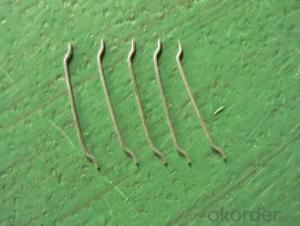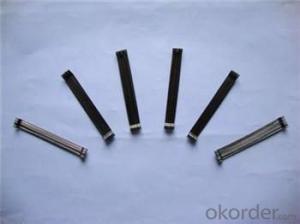Melt Extract Stainless Steel Fiber Wavy for Construction with End Hooked
- Loading Port:
- Tianjin
- Payment Terms:
- TT OR LC
- Min Order Qty:
- 1000 kg
- Supply Capability:
- 250000 kg/month
OKorder Service Pledge
OKorder Financial Service
You Might Also Like
Quick Details
material: steel wire
shape: corrugated round fiber
appearance: clean and bright
usage: construction and concrete
Place of Origin: Shandong, China (Mainland)
Model Number: steel fiber
Product features
steel iber for concrete reinforcement ,it`s widely used in buildings ,bridges ,thin roof engineering ,highway etc
1.Diameter:0.5mm-1.0mm
2.Length: 25mm-60mm
3.Material: low carbon steel wire
4.Feature: excellent tensile,high tenacity,against cracking,impact and fatigue
5.Uses: high way,tunnel,building,airport road serface and so on .
Specifications
Length :20-60mm
Diameter :0.5-1.2
Tensile strength:600Mpa-900Mpa
Appearance :clear and bright steel wire
Style :corrugated round fiber
Secondary dispersion: a water-soluble glue starts to dissolve, in a row of steel fibers in a dispersion premise, dispersed again in every corner of the monofilament fiber, showing a perspective view in the concrete of the fiber web, which play the role of an overall reinforcement
Picture
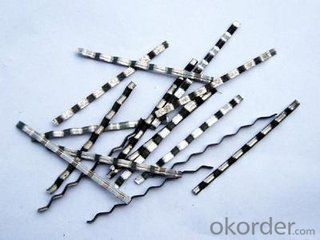
any type steel fiber
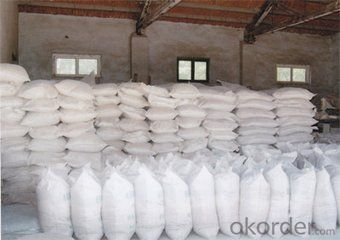
PP bag
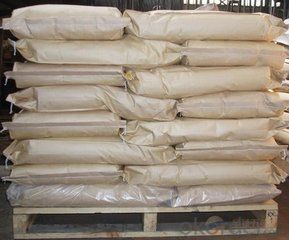
FAQ
steel fiber for concrete reinforcement glued steelfiber in a row>1200Mpa
we can produce any type steel fiber and of course we can make production according to your requirement
we have specilize in this field for almost 10 years ,with good quality and competitive price
- Q: Is melt extract stainless steel fiber compatible with all types of aggregate?
- No, melt extract stainless steel fiber is not compatible with all types of aggregate. The compatibility depends on various factors such as the composition and characteristics of the aggregate, the application requirements, and the specific properties of the fiber. It is important to consider the compatibility and performance of the fiber and aggregate combination in terms of bonding, dispersion, and overall effectiveness in achieving the desired performance. It is recommended to consult with experts or manufacturers to determine the compatibility of melt extract stainless steel fiber with different types of aggregate for specific applications.
- Q: Can melt extract stainless steel fiber be used in tunnel boring machine applications?
- Yes, melt extract stainless steel fiber can be used in tunnel boring machine applications. Stainless steel fibers are known for their high strength and corrosion resistance, making them suitable for use in harsh environments such as tunneling. These fibers can reinforce the concrete used in tunnel construction, improving its overall mechanical properties and durability. Additionally, stainless steel fibers can enhance the crack resistance of the concrete, reducing the risk of structural failure. Therefore, the use of melt extract stainless steel fiber in tunnel boring machine applications can help increase the longevity and safety of tunnel structures.
- Q: Is melt extract stainless steel fiber suitable for use in seismic regions?
- Melt extract stainless steel fiber is well-suited for use in regions prone to earthquakes. These seismic areas necessitate materials capable of enduring the forces and movements that occur during seismic events. Melt extract stainless steel fiber possesses exceptional tensile strength and ductility, which enables it to withstand intense shaking and ground movement without cracking or breaking. Moreover, it enhances the flexural and shear strength of concrete, which is vital for maintaining the structural integrity of buildings and infrastructure in seismic regions. Additionally, stainless steel fibers are resistant to corrosion, guaranteeing long-lasting durability and performance in these locations. Consequently, melt extract stainless steel fiber is a dependable and appropriate choice for reinforcing concrete structures in seismic regions, offering added safety and stability during seismic events.
- Q: What is the effect of melt extract stainless steel fiber on the impact resistance of floor slabs?
- The impact resistance of floor slabs can be positively influenced by the use of melt extract stainless steel fiber. These fibers enhance the overall toughness and durability of the slabs, making them more resilient to impact forces. Melt extract stainless steel fibers are renowned for their high tensile strength and exceptional crack resistance properties. When introduced into the concrete mixture, these fibers form a three-dimensional reinforcement network that aids in the distribution and dissipation of impact energy throughout the slab. This reinforcement network improves the floor slab's ability to endure heavy loads, including impacts from falling objects or heavy machinery. The presence of melt extract stainless steel fibers also helps to minimize crack propagation within the floor slab. Acting as micro-reinforcements, the fibers bridge the cracks and prevent them from expanding further. Consequently, the overall structural integrity and load-bearing capacity of the floor slab are enhanced. Additionally, the use of melt extract stainless steel fibers can reduce the risk of spalling or surface damage caused by impact. The fibers provide added support to the concrete matrix, preventing the formation of cracks and fractures on the slab's surface. This is particularly advantageous in areas with high foot traffic or industrial environments where the floor is frequently subjected to impacts. In summary, incorporating melt extract stainless steel fibers into floor slabs significantly enhances their ability to withstand impact. This results in a more durable and long-lasting flooring solution that can withstand heavy loads, impacts, and potential damages, ensuring a safer and more reliable surface for a variety of applications.
- Q: How does melt extract stainless steel fiber affect the shrinkage of concrete?
- Melt extract stainless steel fiber can significantly reduce the shrinkage of concrete. The fibers act as reinforcement within the concrete matrix, restraining the movement and cracking caused by shrinkage. This results in a more durable and crack-resistant concrete structure.
- Q: What is the cost-effectiveness of using melt extract stainless steel fiber?
- The cost-effectiveness of using melt extract stainless steel fiber can vary depending on factors such as the specific application, project requirements, and the overall cost of the fiber itself. However, generally speaking, melt extract stainless steel fiber is considered to be cost-effective due to its durability, high tensile strength, and resistance to corrosion. These properties can result in reduced maintenance and repair costs over time, making it a cost-effective choice for applications that require reinforcement or enhanced durability.
- Q: Can melt extract stainless steel fiber be used in fiber-reinforced shotcrete?
- Yes, melt extract stainless steel fiber can be used in fiber-reinforced shotcrete. Stainless steel fibers are commonly used in shotcrete applications due to their high tensile strength, corrosion resistance, and durability. The melt extract process ensures uniform and consistent fiber properties, making it suitable for reinforcing shotcrete. The addition of stainless steel fibers to shotcrete enhances its mechanical properties, such as flexural and impact strength, crack resistance, and ductility. This improves the overall performance and longevity of the shotcrete structure. However, the specific application requirements, fiber dosage, and mix design should be considered to ensure proper and effective utilization of the stainless steel fibers in the fiber-reinforced shotcrete.
- Q: How does melt extract stainless steel fiber affect the permeability of concrete to chloride ions?
- Melt extract stainless steel fiber can significantly reduce the permeability of concrete to chloride ions. When added to concrete, the stainless steel fibers create a three-dimensional reinforcement network that enhances the durability and performance of the concrete. Due to their high aspect ratio and uniform distribution throughout the concrete matrix, these fibers act as a barrier to the movement of chloride ions. Chloride ions are one of the main causes of concrete deterioration, as they can penetrate the concrete and reach the reinforcing steel, leading to corrosion and subsequent structural damage. However, the presence of stainless steel fibers obstructs the path of chloride ions, slowing down their diffusion and reducing their overall penetration into the concrete. Moreover, the stainless steel fibers improve the overall microstructure of the concrete by reducing the size and connectivity of pores, which are the primary pathways for chloride ion ingress. This reduction in pore connectivity further restricts the movement of chloride ions and decreases the overall permeability of the concrete. In addition to reducing permeability, the stainless steel fibers also enhance the mechanical properties of the concrete, making it more resistant to cracking and improving its overall durability. This combination of improved microstructure and increased resistance to chloride ion penetration greatly enhances the service life of concrete structures in chloride-rich environments, such as coastal areas or structures exposed to deicing salts. Overall, the addition of melt extract stainless steel fiber to concrete significantly improves its resistance to chloride ion permeability, thus increasing its durability and lifespan in chloride-rich environments.
- Q: What is the typical fiber length and diameter of melt extract stainless steel fiber?
- The typical fiber length and diameter of melt extract stainless steel fiber can vary depending on the specific manufacturer and application requirements. However, in general, melt extract stainless steel fiber typically has a length ranging from a few millimeters to several centimeters. The diameter of these fibers can vary from around 10 micrometers to 50 micrometers. These dimensions are chosen to provide the desired properties such as strength, durability, and thermal conductivity for various applications, including reinforcement in composites, thermal insulation, and electromagnetic shielding.
- Q: Can melt extract stainless steel fiber be used in pre-stressed concrete?
- Indeed, melt extract stainless steel fiber has the potential to be utilized in pre-stressed concrete. By incorporating stainless steel fibers into pre-stressed concrete, one can effectively enhance its ductility and resistance to cracking, thereby bolstering the overall performance and durability of the concrete structure. The stainless steel fibers function as reinforcement by effectively dispersing stress and obstructing the spread of cracks. Consequently, this aids in enhancing the structural integrity of the pre-stressed concrete and fortifying its ability to withstand mechanical and environmental pressures. Moreover, the application of melt extract stainless steel fibers in pre-stressed concrete can also mitigate the risk of corrosion, as stainless steel boasts remarkable resistance against rust and other forms of deterioration. In essence, the inclusion of melt extract stainless steel fibers in pre-stressed concrete materializes as a means to augment its strength, flexibility, and longevity.
Send your message to us
Melt Extract Stainless Steel Fiber Wavy for Construction with End Hooked
- Loading Port:
- Tianjin
- Payment Terms:
- TT OR LC
- Min Order Qty:
- 1000 kg
- Supply Capability:
- 250000 kg/month
OKorder Service Pledge
OKorder Financial Service
Similar products
Hot products
Hot Searches
Related keywords
